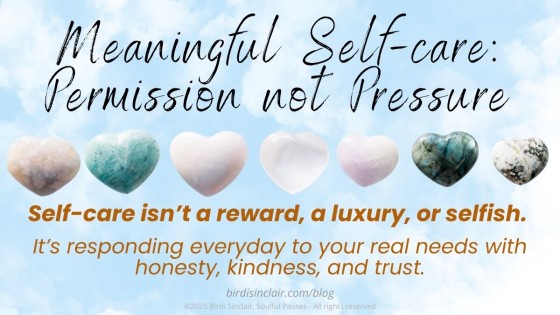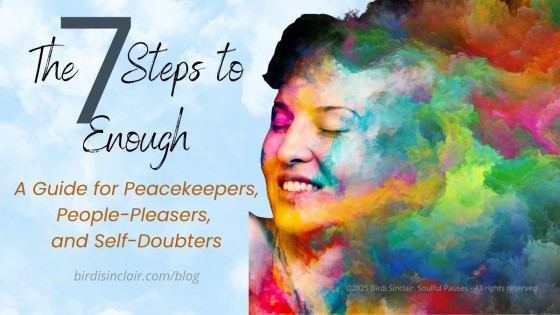
Soulful Pauses Blog
It's about connection.
The art of living whole, connected, healed, inspired.
BirdiSinclair.com/blog
Healing Soul Wounds: Wholeness Beyond Psychology
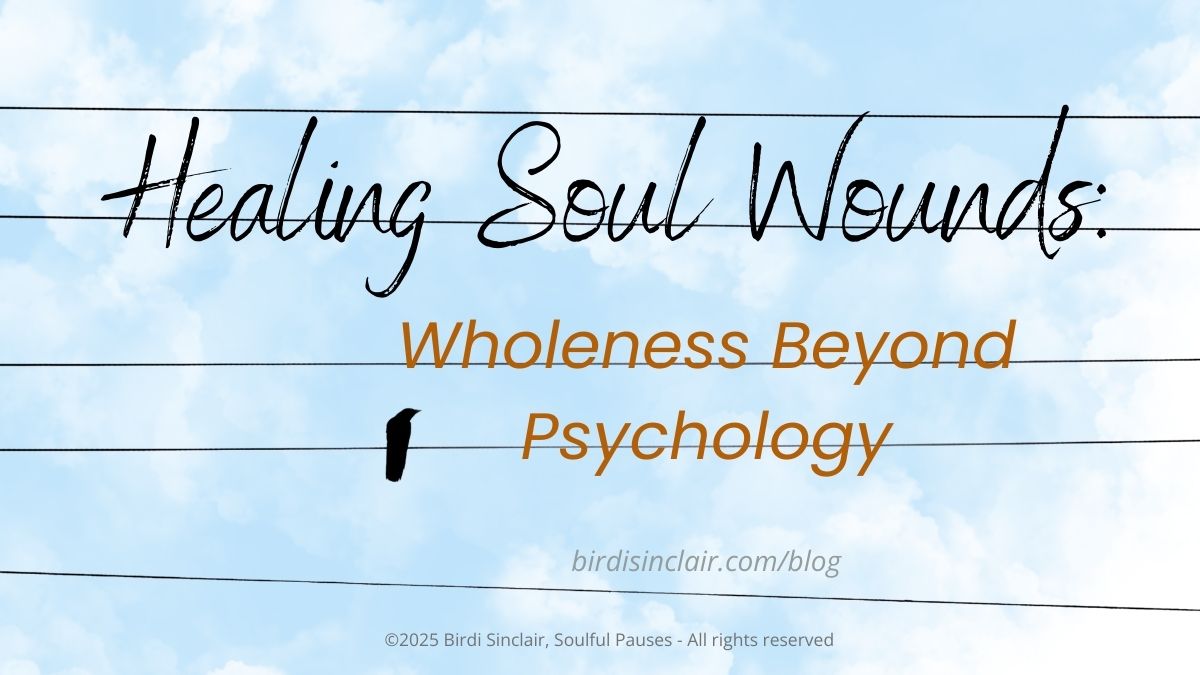
Healing soul wounds means more than psychology. Explore integrative support for grief, estrangement, relationships, and life transitions.
Let’s talk about what it’s like to move through big life changes, like grief, estrangement, relationships coming or going, fresh transitions -not from the perspective of a textbook, but in a way that honors the real, embodied experience of being human. For many people, the language of “soul wounds” fits better than anything clinical; it describes the places in us that ache, sometimes silently, even when we’re doing all the “right” things for our minds and bodies. Sometimes, counseling helps our thoughts feel clearer, and we learn new strategies, but our hearts still hurt.
The 5 Bodies of Wholeness
I believe wholeness isn’t just about mental health or physical stamina. We’re multi-layered beings—what I call the "5 Bodies of Wholeness":
-
Intellectual: Your ideas, perspectives, and belief systems.
-
Mental: Your thought patterns, self-talk, and sense of focus.
-
Emotional: The moods and feelings that color your days.
-
Physical: How your body speaks, through energy, aches, or ease.
-
Spiritual: Your inner compass, felt sense of meaning, and connection to something larger.
Pause. Which of these bodies feels most alive, or most tender, for you right now? Is there a quiet message waiting to be heard from one layer over another? You can simply notice without needing to answer or change a thing.
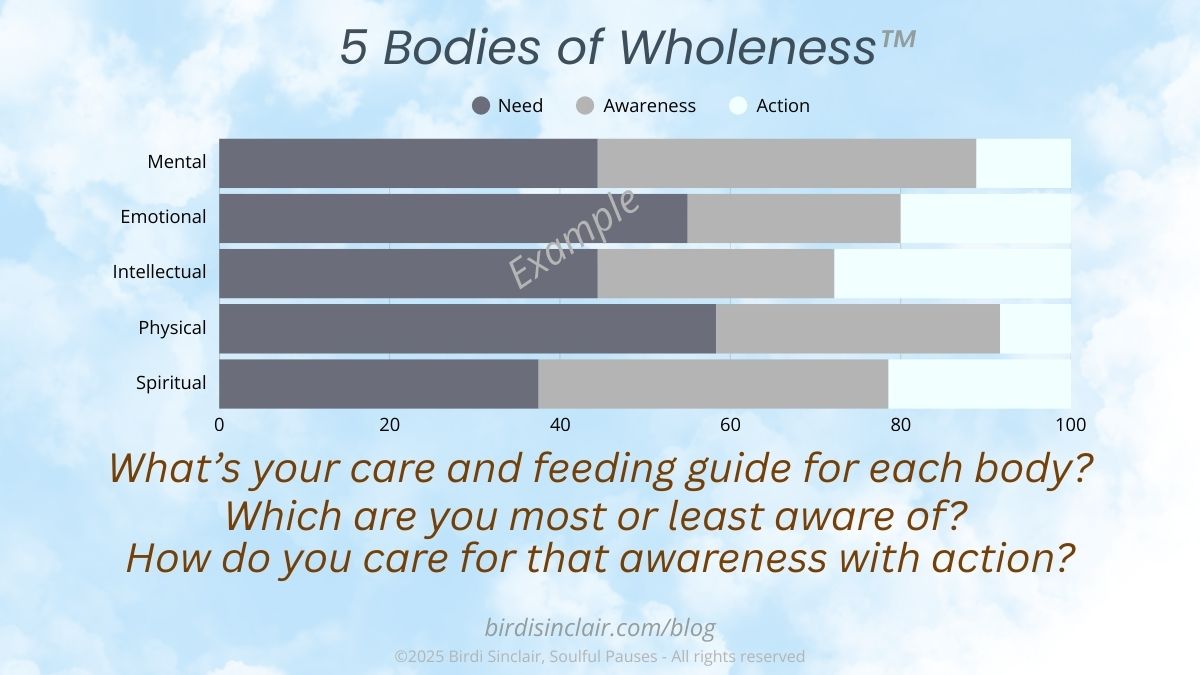
Here’s a living example:
Sarah wakes one morning in heaviness. She lets her mind wander (intellectual), notices her thoughts drift to self-criticism (mental), and feels sadness in her chest (emotional). Instead of rushing into her to-dos, she takes a slow walk (physical), letting her feet touch the earth, and stops near a tree to breathe intentionally, feeling herself as part of the rhythms and cycles of nature. A feeling of being held finds her in the breeze (spiritual). Her healing is not a single act but a gentle weaving, one layer at a time.
When we hurt, all of these “bodies” can be impacted, and healing often means listening to the quiet messages from each one.
Ask yourself: “Which body is longing for my attention?”
Why Traditional Psychological Tools Aren’t Enough
Let’s start with a little honesty: clinical strategies—CBT (Cognitive Behavioral Therapy), DBT (Dialectical Behavior Therapy), EMDR (Eye Movement Desensitization and Reprocessing), psychodynamic therapy, even mindfulness-based and narrative methods are absolutely powerful. Research shows these approaches can help with anxiety, depression, trauma, and overwhelm.
CBT, for instance, helps by testing and reshaping the thoughts that spiral us down, while DBT is great for emotional regulation and distress tolerance. EMDR is making headlines for its ability to help people process and “unfreeze” grief and trauma in the brain.
But here’s the thing: most of these focus mainly on the mental and intellectual bodies, sometimes touching emotions, rarely the physical, and seldom the spiritual.
And that leaves many people quietly asking, “Why isn’t therapy enough for my grief? Why do I still feel broken after I’ve tried all the right tools?”
We now know from both client stories and growing research that emotional pain weaves through the entire system. When only the psychology part is addressed, deeper aches - what I call soul wounds - often linger. The ache that therapy can’t touch isn’t a sign of failure; it’s simply a call from your wordless spaces to tend to the whole self. Time alone doesn’t heal; it’s the integration of all these bodies that creates a true sense of relief, self-trust, and new possibility.
What happens inside when “healing” is only described through thoughts or behaviors?
Try asking yourself: “Is my spirit or body asking for something different today?” Nourish your curiosity.
Listening to the Soul’s Messages
Imagine grief as a visitor knocking at the doors of all your bodies. If we only talk our way through (mental), or analyze memories (intellectual), part of us heals, but the places inside that long for meaning, connection, and freedom stay untouched.
This is where healing beyond psychology matters. Talk therapy alone doesn’t always reach the emotional body’s rawness, the physical body’s tension, or the spiritual body’s longing. These are the quiet wounds that talk therapy can’t always reach, yet they’re often where relief and wholeness finally take root.
-
Physical body: Tightness, restlessness, numbness, even illness. Massage therapy, gentle movement, or grounding touch can remind your body, “You’re safe here. I respect you.”
-
Emotional body: “Can you acknowledge what hurts, without rushing to fix it?” Allow yourself to feel, label, and express what's true—art, breathwork, tears, or sharing with a compassionate listener.
-
Spiritual body: That voice beneath the noise asks, “What truly matters now? What gives you hope or a sense of meaning, even if you can’t explain it?” Whether it's meditation, rituals, quiet nature, or even noticing awe - these acts restore your sense of inner wholeness.
Here’s a quick experiment: put a hand to your heart, breathe, and ask, “What do I need?” The answer doesn’t have to be words. A color, memory, or sensation is enough.
Modern Approaches Include Integration
Therapists and practitioners now know that weaving spiritual and somatic (body-based) strategies into client work gets richer results. A session might pair narrative therapy (reimagining your personal story) with gardening, meditative walks, or creative rituals—ways to honor all five bodies.
“Integrative approaches” are on the rise, blending CBT, DBT, mindfulness, EMDR, narrative and somatic therapies, plus lifestyle medicine like nutrition, movement, sleep rituals - because no one method reaches every part that deserves healing.
Is there a practice, large or small, that brings you closer to honoring all five bodies at once? Let yourself notice what gives you energy or ease, and write it down if you wish. Your rhythms are allowed to change. You have permission.
What Soul Wound Support Looks Like in Practice
You honor every layer by asking, “Am I ignoring a part of myself - intellectual, mental, emotional, physical, or spiritual?”
You use psychological skills for structure: Challenge old thoughts (CBT), surf emotional waves (DBT), or make meaning with your narrative.
You include body listening and gentle care: Find comfort in massage, stretching, movement, or simply noticing your body’s signals - which I call "feel your thoughts."
Let curiosity be your guide.
You make meaning part of the healing: Reflect on what lights you up, the rituals that restore you. Maybe it’s a particular scent, song, or morning routine.
You don’t go it alone: Support from therapists, friends, spiritual guides, groups, even nature and the arts found in reading, music, visual arts, film, dance, can turn loneliness into connectedness and help untangle your experience.
Mini experiment: For one week, notice which body is easiest to tune in to, and which one feels harder to reach. Offer a small kindness to each. That’s integration in practice.
Inner Wisdom for the Soul and Psyche
Let’s drop the pretense that healing has to look a certain way. If you’ve ever felt stuck in pain that smart strategies alone can’t touch, know that you’re not broken or failing - you’re simply being asked, by some wise inner voice, to listen more widely and more gently.
Healing can look like…
-
Going to therapy and also finding ways to heal the soul wounds left untouched by counseling alone.
-
Journaling about what keeps you up at night, then noticing the ache underneath the coping. (You don't have to fix this ache. Naming it is enough. It's allowed to be there.)
-
Cooking a meal that reminds you of someone you miss, and letting yourself feel both the joy and the grief.
-
Leaning into practices that reflect your values and sense of self - that make you feel held, because your spirit needs healing too.
You are not your productivity. You are not a checklist. You are a whole, feeling, changing being, worthy of care simply by being here. Remember self-care is not a luxury, selfish, or a reward.
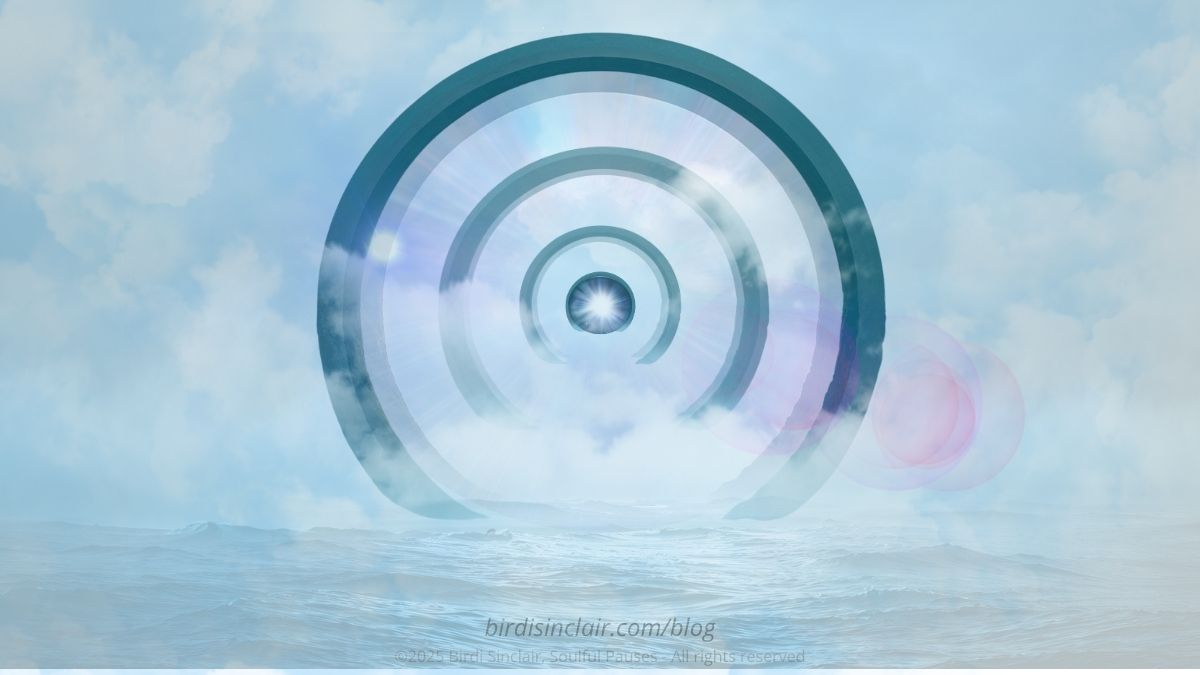
The Takeaway: Wholeness Means Integration
The research is clear: blending psychological strategies with soul work - the deliberate tending to your spiritual, emotional, and physical bodies - leads to more lasting relief and a richer, more authentic life.
You are not just your thoughts or habits; you’re an entire ecosystem of experience, wisdom, change, and longing, perfect and unique.
How do you want to put the pieces together today? Healing is not about erasing pain, but about letting every part of you be witnessed, cared for, and loved into new possibility.
If this resonates, know that you’re not alone. This path is here for anyone, because wholeness is not a privilege, it’s your birthright, and the world needs you just as you are, to shine.
What’s one gentle curiosity or permission you might grant yourself this week?
May you find a moment of peace, a spark of delight, or simply the grace to meet yourself just as you are. That is enough.
Categories: : Grief and Loss, Self Trust, Soulful Pauses
Would you like to take the quiz I made for you?
Values, Strengths, Self-care - Oh My!
It takes a few minutes and then you get your results of your primary Core Value
based on biology, psychology, sociology, spirituality.
You'll receive a free 19 page guide! Easy, fun, thought provoking.
Like What You Read?
Subscribe to Soulful Pauses Blog
New posts will come right to you! Easy Peasy.
Thank you for sharing some time with me here.
Let's stay in touch.
Kindly,


Dr. Birdi Sinclair
Your Soulful Pauses and Intimate Living Coach
Sharing Spiritual Counseling, Direction, Coaching
Grief, Clarity, and Relationship Specialist
birdisinclair.com/support

 Dr. Birdi Sinclair
Dr. Birdi Sinclair 
